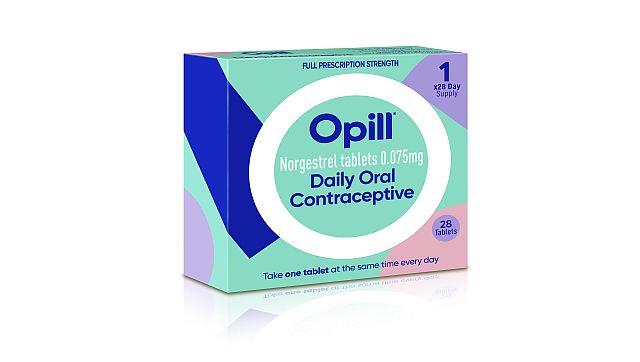The United States Food and Drug Administration (FDA) has approved the first over-the-counter birth control pill, allowing American women and girls to obtain contraceptive medication as easily as they buy aspirin and eyedrops. It cleared once-a-day Opill to be sold without a prescription, making it the first such medication to be moved out from behind the pharmacy counter. “Today’s approval marks the first time a nonprescription daily oral contraceptive will be an available option for millions of people in the United States,” Dr Patrizia Cavazzoni, director of the FDA’s Centre for Drug Evaluation and Research, said in a news release Thursday morning. “When used as directed, daily oral contraception is safe and is expected to be more effective than currently available nonprescription contraceptive methods in preventing unintended pregnancy.” The Opill is manufactured by Dublin-based Perrigo. Frederique Welgryn, Perrigo’s global vice president of women’s health, called the approval “a historic moment and a revolutionary change in contraceptive access and reproductive health.” Why the FDA approval is significant? Opill is a progestin-only oral contraceptive that helps prevent pregnancy by thickening cervical mucus, inhibiting ovulation, or both. Hormone-based pills have long been the most common form of birth control in the US, used by tens of millions of women since the 1960s. Until now, all of them required a prescription. Medical societies and women’s health groups have pushed for wider access for decades, noting that an estimated 45 per cent of the six million annual pregnancies in the US are unintended. Teens and girls, women of colour and those with low incomes report greater hurdles in getting prescriptions and picking them up.
Also Read: US abortion pill ruling: What has happened so far and what comes next
The challenges can include paying for a doctor’s visit, getting time off from work and finding child care. “This is really a transformation in access to contraceptive care,” said Kelly Blanchard, president of Ibis Reproductive Health, a nonprofit group that supported the approval. “Hopefully this will help people overcome those barriers that exist now.” Perrigo says Opill could be an important new option for the estimated 15 million US women who currently use no birth control or less effective methods, such as condoms. They are a fifth of women who are child-bearing age. When will the drug be available? Opill is expected to be available in pharmacies, supermarkets, convenience stores, and internet retailers in early 2024, and there will be no age restrictions on sales. The FDA’s approval of an over-the-counter birth control pill may expand options for people seeking hormonal contraception to all 50 states and US territories. [caption id=“attachment_12865222” align=“alignnone” width=“640”] The Food and Drug Administration decision means drugmaker Perrigo can sell its once-a-day Opill without a prescription. AP[/caption] But how many women will actually gain access depends on the medication’s price, which Perrigo plans to announce later this year. “The reason why so many of us worked tirelessly for years to get over-the-counter birth control pills is to improve access … cost shouldn’t be one of those barriers,” said Dr Pratima Gupta of the American College of Obstetricians and Gynaecologists. Most older birth control pills cost $15 to $30 (Rs 1,230 to Rs 2,460) for a month’s supply without insurance coverage. Over-the-counter medicines are generally much cheaper than prescriptions, but they typically aren’t covered by insurance. How safe is the pill? Newer birth control pills typically combine two hormones, estrogen and progestin, which can help make periods lighter and more regular. But their use carries a heightened risk of blood clots, and they shouldn’t be used by women at risk for heart problems, such as those who smoke and are over 35.
Also Read: Morning after-pilll not abortion pill: US FDA’s change on label explained
Opill has only progestin, which prevents pregnancy by blocking sperm from reaching the cervix. It must be taken around the same time daily to be most effective. In its internal review published in May, the FDA noted that some women in Perrigo’s study had trouble understanding the drug’s labelling information. In particular, the instructions warn that women with a history of breast cancer should not take the pill because it could spur tumour growth. Common side effects include irregular vaginal bleeding, headaches, dizziness and cramps, according to the FDA. The label also cautions that certain drugs can interfere with Opill’s effectiveness, including medications for seizures, HIV and hypertension. Perrigo executives said the company will spend the rest of the year manufacturing the pill so it can be available in stores early next year. With inputs from AP
The Food and Drug Administration decision means drugmaker Perrigo can sell its once-a-day Opill without a prescription. AP[/caption] But how many women will actually gain access depends on the medication’s price, which Perrigo plans to announce later this year. “The reason why so many of us worked tirelessly for years to get over-the-counter birth control pills is to improve access … cost shouldn’t be one of those barriers,” said Dr Pratima Gupta of the American College of Obstetricians and Gynaecologists. Most older birth control pills cost $15 to $30 (Rs 1,230 to Rs 2,460) for a month’s supply without insurance coverage. Over-the-counter medicines are generally much cheaper than prescriptions, but they typically aren’t covered by insurance. How safe is the pill? Newer birth control pills typically combine two hormones, estrogen and progestin, which can help make periods lighter and more regular. But their use carries a heightened risk of blood clots, and they shouldn’t be used by women at risk for heart problems, such as those who smoke and are over 35.
Also Read: Morning after-pilll not abortion pill: US FDA’s change on label explained
Opill has only progestin, which prevents pregnancy by blocking sperm from reaching the cervix. It must be taken around the same time daily to be most effective. In its internal review published in May, the FDA noted that some women in Perrigo’s study had trouble understanding the drug’s labelling information. In particular, the instructions warn that women with a history of breast cancer should not take the pill because it could spur tumour growth. Common side effects include irregular vaginal bleeding, headaches, dizziness and cramps, according to the FDA. The label also cautions that certain drugs can interfere with Opill’s effectiveness, including medications for seizures, HIV and hypertension. Perrigo executives said the company will spend the rest of the year manufacturing the pill so it can be available in stores early next year. With inputs from AP
US approves first over-the-counter birth control pill: Why is this significant?
FP Explainers
• July 14, 2023, 09:54:59 IST
The US FDA has approved the oral contraceptive Opill for over-the-counter sales, making it the first hormonal contraceptive pill available in the country without a prescription. This big decision comes amid legal battles over women’s reproductive rights
Advertisement
)
End of Article